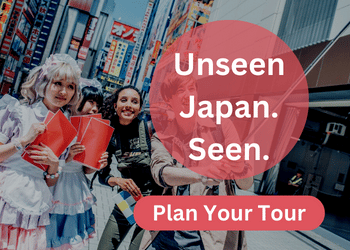2024 is shaping up to be another lucky year for Japan’s tourism industry. As travelers flock to experience Japan’s rich culture, there are growing concerns about tourism and disruption to local life. In response, central and local governments are exploring solutions. A new idea: a dual fare system that charges tourists more than locals. In the latest sign the approach is gaining popularity, Hokkaido is calling on local merchants to adopt the strategy.
Price separation

Tough times call for tough measures. This appears to be the driving force behind Hokkaido’s imminent introduction of a „dual pricing” system for tourist attractions and services. Simply put, higher prices for tourists and lower prices for locals.
The project has been in the works in Japan for some time. It was first announced in Hokkaido during a Yomiuri panel discussion featuring Hokkaido Tourism Organization President Kenji Koganezawa and Tsuruya Holdings President Masayuki Onishi.
Hotspot: Hokkaido’s popular destinations saw a significant drop in local tourism during the 2024 Golden Week. Prefectural locals don’t go to hot vacation spots like Niseko – maybe they feel it’s too expensive.
Given the apparent downward trend, President Koganezawa is pushing companies and institutions to lower rates for local customers from this fall—in essence a dual pricing system. The initiative aims to standardize approaches across all sectors, from accommodation to food and transport.
In the accommodation sector, local residents can soon enjoy a 10% discount. Meanwhile, tourists will face a 3% rate increase, which is aimed at balancing the revenue impacts. Discussions are ongoing and many factors are still on the table.
An increasing trend

Amid a weakening yen and inflation, foreign tourists are outspending locals. Viewership topped 3 million for two consecutive months, peaking at 3,042,900 in April alone. The Finance Ministry’s preliminary report for fiscal year 2023 reveals a travel balance of ¥4.2295 trillion, underscoring a significant gap between Japanese overseas spending and inbound tourism spending.
Advertisements
To retain local tourists, tourist areas across Japan are considering dual pricing as a solution. Various industries have proposed various projects and aim not only to attract local people but also to raise funds for the conservation and development of the area.
A notable proposal came from Himeji Castle this year: a plan for a dual entrance fee system that would separate foreign tourists from locals. Reasons cited include concerns over over-tourism, projected costs of conserving the UNESCO site. Himeji City Mayor Kiyomoto shared his thoughts:
“It’s not about making a profit. When calculating the costs of maintaining a sustainable World Heritage site, there should be different prices for children, the elderly, educational visits and pure tourists. A possible approach could be to implement dual pricing for citizens and international visitors.
But Himeji Castle was not the only one to take action. The „Blue Pond,” a popular tourist attraction in Pei Town in Kamikawa, Hokkaido, is also considering an „entrance tax” for visitors. The region is feeling the pressure of tourism as annual tourist numbers average 250 times the local population. As with Himeji, this levy will help fund necessary maintenance costs.
Divide beyond price
Experiments with the dual price system did not stop at cultural sites; The food industry has also adopted this approach. As food prices are more affordable for visitors with stronger currencies and more expensive for locals managing a weaker yen, restaurants implement dual pricing strategies to strike a balance.
Among them, establishments such as „Kaizen Viking & Hamayagi BBQ Tamatebako” in Shibuya, Tokyo, have differentiated lunch set prices based on customers. Tourists are charged ¥6,578, while domestic residents enjoy a generous ¥1,100 discount.
Others have taken a more creative approach. For example, Hiroshima Okonomiyaki restaurant has launched “Prefecture Day” every Friday night since April 2024. Essentially, an exclusive evening reserved for local and returning visitors. With 80% of its regular customers being foreign tourists, the initiative aims to re-engage with the regulars.
“The restaurant was originally a place for locals to enjoy and interact with, not just tourists. I believe the current situation is a bubble that won’t last forever,” commented the owner.
Nevertheless, criticism soon arose about the exclusion of foreign visitors one day each week. The debate goes beyond „Prefecture Day” to include the broader concept of dual pricing and creating divisions.
What do Japanese people think?
Opinions about this approach are mixed. Many locals welcome the relief of their costs, and some agree that higher tourist fees are necessary to maintain high-quality services. But what are the actual numbers of positive feedback? Let’s break it down.
According to the February 2024 Loyalty Marketing Survey, about 60% of people support dual pricing. Of them, 29.4% strongly support the move. This is a great way to fight over-tourism and protect the environment. One X user commented:
„Globally, double pricing or foreign pricing is very common. Complaints that it is discriminatory or discourages inbound tourism are unwarranted. Given the current problems of overtourism, such concerns do not correspond to reality. Japan has been very accommodating until now.
Still, concerns persist. Critics warn of a potential backlash, making local tourism less profitable and less attractive. Others worry about the biased nature of this approach:
„Obviously, this is discriminatory and highlights flaws in Japanese social norms and racism. It can cause mistrust of Japan and resentment among travelers, ultimately affecting the Japanese economy in the long run. It should be curbed by law.
should be carefully considered
Many destinations around the world use double pricing to deal with tourism. Examples include Bhutan’s $100 tourist tax and nine times higher fees for tourists at Egypt’s Giza pyramids. However, as Professor Takehiro Sataki of Josei International University’s Faculty of Tourism points out:
„In developing countries, dual pricing is used to earn foreign currency, but it is rare in developed countries like Japan. Some may argue that it is unfair to have different prices based on nationality. As Japan promotes itself as a tourism-friendly country that actively welcomes foreigners, it is cautious about whether this will affect inbound tourism trends. to be discussed.
Professor Sadaki also emphasized other important factors, such as the status of foreign residents in Japan, who should be considered „locals” regardless of nationality. In addition, there are long-term concerns—a possible backlash from foreign tourists, a decline in Japan’s appeal and the risk of rising inflation.
In other words, the situation is not straightforward – it goes beyond the cost of services. Implementing such a complex program will require constant discussions and adjustments.
Need help navigating rising tourism prices in Japan? Want a unique, one-of-a-kind Japan experience? Let the experts at Unseen Japan Tours plan a tour based on your interests. We can also serve as your mentors!
proof’s
„Hokkaido Citizen Discount” Will Be Tested at Tourist Destinations in Hokkaido…Accommodation costs are rising due to the increase in incoming tourists, countermeasures are being taken with „double pricing”.dmenu message
Considering charging an „entrance tax” at the popular tourist destination „Blue Pond”… Hokkaido’s Pei town receives „250 times its population” of tourists, which could become a trump card for fighting tourism.Yahoo News Japan
Consumption by tourists to Japan has increased significantly, and „dual pricing,” where prices are split between tourists and locals, is likely to spread.Changi Shimbun
Himeji Castle „Two kinds of prices” Why have some restaurants introduced „double prices”?NHK
Unintended disadvantages are caused by the introduction of „double pricing” for inbound tourists. Is it true that „inflation is systemic and widespread”?Yahoo News Japan
Number of foreign visitors to Japan (as of April 2024)Japan National Tourism Bureau

. „Gracz. Namiętny pionier w mediach społecznościowych. Wielokrotnie nagradzany miłośnik muzyki. Rozrabiacz”.



